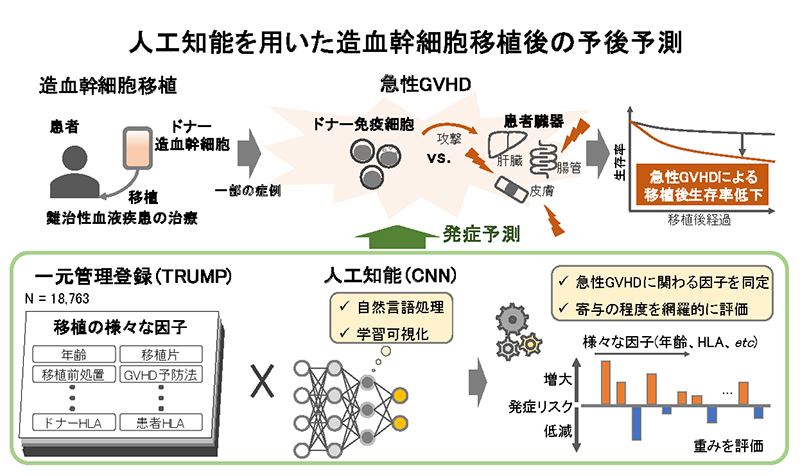2023-05-24 エディンバラ大学
◆両薬は組み合わせて使用するとさらに効果的であり、さらなる試験で結果が確認されれば、5年以内にラクナ梗塞の治療法として利用できる可能性があると専門家は述べている。
◆ラクナ梗塞は、英国だけでも年間35,000人以上の人々に影響を及ぼしている。これは脳内の小さな血管が損傷し正常に機能しなくなる脳小血管疾患によって引き起こされる。小血管疾患は認知機能の低下や認知症の一般的な原因でもある。
◆この試験は、エディンバラ大学とノッティンガム大学、英国認知症研究所が主導し、ラクナ梗塞を経験した363人を対象として行われた。参加者は通常の脳梗塞予防治療に加えて、イソソルビドモノニトレート、シロスタゾール、または両方の薬を1年間摂取した。
◆イソソルビドモノニトレートとシロスタゾールの両方を摂取した参加者は、どちらの薬も摂取しなかったグループに比べて、思考力と記憶に関する問題が約20%少なかった。彼らはまた、より独立し、生活の質も向上したと報告した。
関連情報>
- https://www.ed.ac.uk/news/2023/existing-drugs-could-treat-strokes-linked-to-demen
- https://jamanetwork.com/journals/jamaneurology/fullarticle/2805321
症候性脳小血管障害患者における一硝酸イソソルビドとシロスタゾール治療について ラクナ・インターベンション・トライアル-2(LACI-2)ランダム化臨床試験 Isosorbide Mononitrate and Cilostazol Treatment in Patients With Symptomatic Cerebral Small Vessel Disease The Lacunar Intervention Trial-2 (LACI-2) Randomized Clinical Trial
Joanna M. Wardlaw, Lisa J. Woodhouse, Iris I. Mhlanga, Katherine Oatey, Anna K. Heye,John Bamford,Vera Cvoro, Fergus N. Doubal,Timothy England, Ahamad Hassan,Alan Montgomery,John T. O’Brien,Christine Roffe,Nikola Sprigg,David J. Werring,Philip M. Bath, for the Lacunar Intervention Trial-2 (LACI-2) Investigator Group
JAMA Neurology Published:May 24, 2023
DOI:10.1001/jamaneurol.2023.1526

Key Points
Question Can modulators of cerebrovascular endothelial function, including isosorbide mononitrate (ISMN; a nitric oxide donor) and cilostazol (a phosphodiesterase-3 inhibitor), improve long-term outcomes after lacunar ischemic stroke?
Findings In this randomized clinical trial of 363 participants treated with ISMN, cilostazol, ISMN-cilostazol, or no study drug in a 2 × 2 factorial design, 99% of patients were retained at 1 year with good study drug adherence and no safety concerns. Isosorbide mononitrate reduced recurrent stroke and cognitive impairment, cilostazol reduced dependence, and ISMN-cilostazol reduced the composite of adverse vascular, dependence, and cognitive outcomes.
Meaning These 2 inexpensive licensed medications (ISMN and cilostazol) may reduce adverse long-term outcomes of lacunar ischemic stroke, a form of cerebral small vessel disease, and definitive trials are needed to confirm these findings.
Abstract
Importance Cerebral small vessel disease (cSVD) is a common cause of stroke (lacunar stroke), is the most common cause of vascular cognitive impairment, and impairs mobility and mood but has no specific treatment.
Objective To test the feasibility, drug tolerability, safety, and effects of 1-year isosorbide mononitrate (ISMN) and cilostazol treatment on vascular, functional, and cognitive outcomes in patients with lacunar stroke.
Design, Setting, and Participants The Lacunar Intervention Trial-2 (LACI-2) was an investigator-initiated, open-label, blinded end-point, randomized clinical trial with a 2 × 2 factorial design. The trial aimed to recruit 400 participants from 26 UK hospital stroke centers between February 5, 2018, and May 31, 2021, with 12-month follow-up. Included participants had clinical lacunar ischemic stroke, were independent, were aged older than 30 years, had compatible brain imaging findings, had capacity to consent, and had no contraindications to (or indications for) the study drugs. Data analysis was performed on August 12, 2022.
Interventions All patients received guideline stroke prevention treatment and were randomized to ISMN (40-60 mg/d), cilostazol (200 mg/d), ISMN-cilostazol (40-60 and 200 mg/d, respectively), or no study drug.
Main Outcomes The primary outcome was recruitment feasibility, including retention at 12 months. Secondary outcomes were safety (death), efficacy (composite of vascular events, dependence, cognition, and death), drug adherence, tolerability, recurrent stroke, dependence, cognitive impairment, quality of life (QOL), and hemorrhage.
Results Of the 400 participants planned for this trial, 363 (90.8%) were recruited. Their median age was 64 (IQR, 56.0-72.0) years; 251 (69.1%) were men. The median time between stroke and randomization was 79 (IQR, 27.0-244.0) days. A total of 358 patients (98.6%) were retained in the study at 12 months, with 257 of 272 (94.5%) taking 50% or more of the allocated drug. Compared with those participants not receiving that particular drug, neither ISMN (adjusted hazard ratio [aHR], 0.80 [95% CI, 0.59 to 1.09]; P = .16) nor cilostazol (aHR, 0.77 [95% CI, 0.57 to 1.05]; P = .10) alone reduced the composite outcome in 297 patients. Isosorbide mononitrate reduced recurrent stroke in 353 patients (adjusted odds ratio [aOR], 0.23 [95% CI, 0.07 to 0.74]; P = .01) and cognitive impairment in 308 patients (aOR, 0.55 [95% CI, 0.36 to 0.86]; P = .008). Cilostazol reduced dependence in 320 patients (aHR, 0.31 [95% CI, 0.14 to 0.72]; P = .006). Combination ISMN-cilostazol reduced the composite (aHR, 0.58 [95% CI, 0.36 to 0.92]; P = .02), dependence (aOR, 0.14 [95% CI, 0.03 to 0.59]; P = .008), and any cognitive impairment (aOR, 0.44 [95% CI, 0.23 to 0.85]; P = .02) and improved QOL (adjusted mean difference, 0.10 [95% CI, 0.03 to 0.17]; P = .005) in 153 patients. There were no safety concerns.
Conclusions and Relevance These results show that the LACI-2 trial was feasible and ISMN and cilostazol were well tolerated and safe. These agents may reduce recurrent stroke, dependence, and cognitive impairment after lacunar stroke, and they could prevent other adverse outcomes in cSVD. Therefore, both agents should be tested in large phase 3 trials.
Trial Registration ClinicalTrials.gov Identifier: NCT03451591


